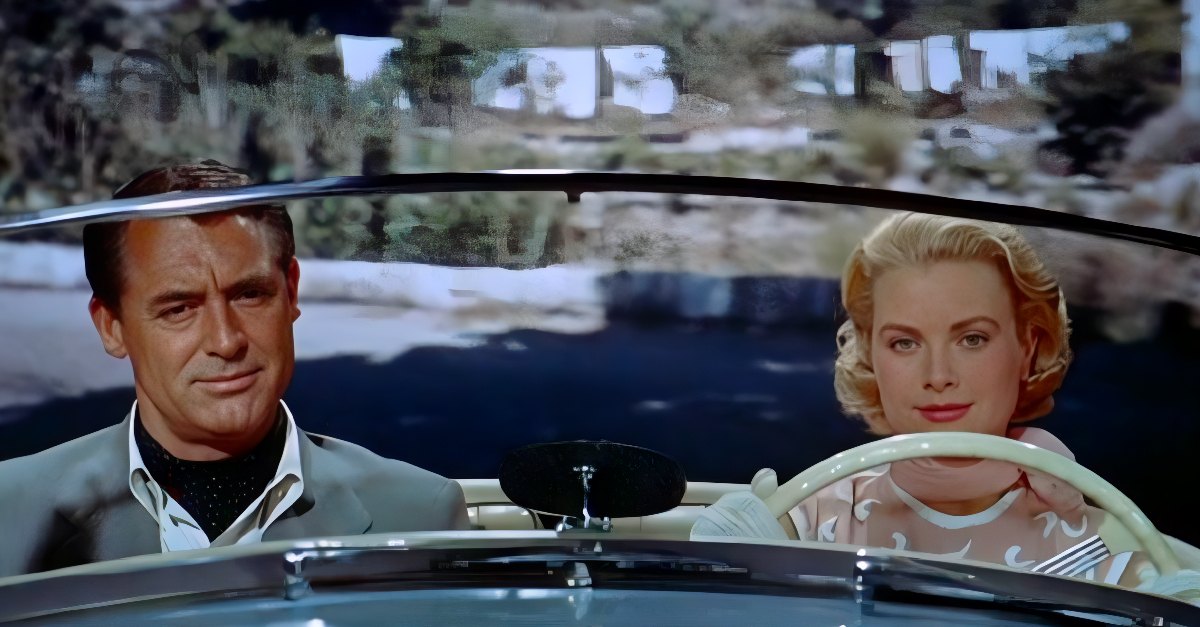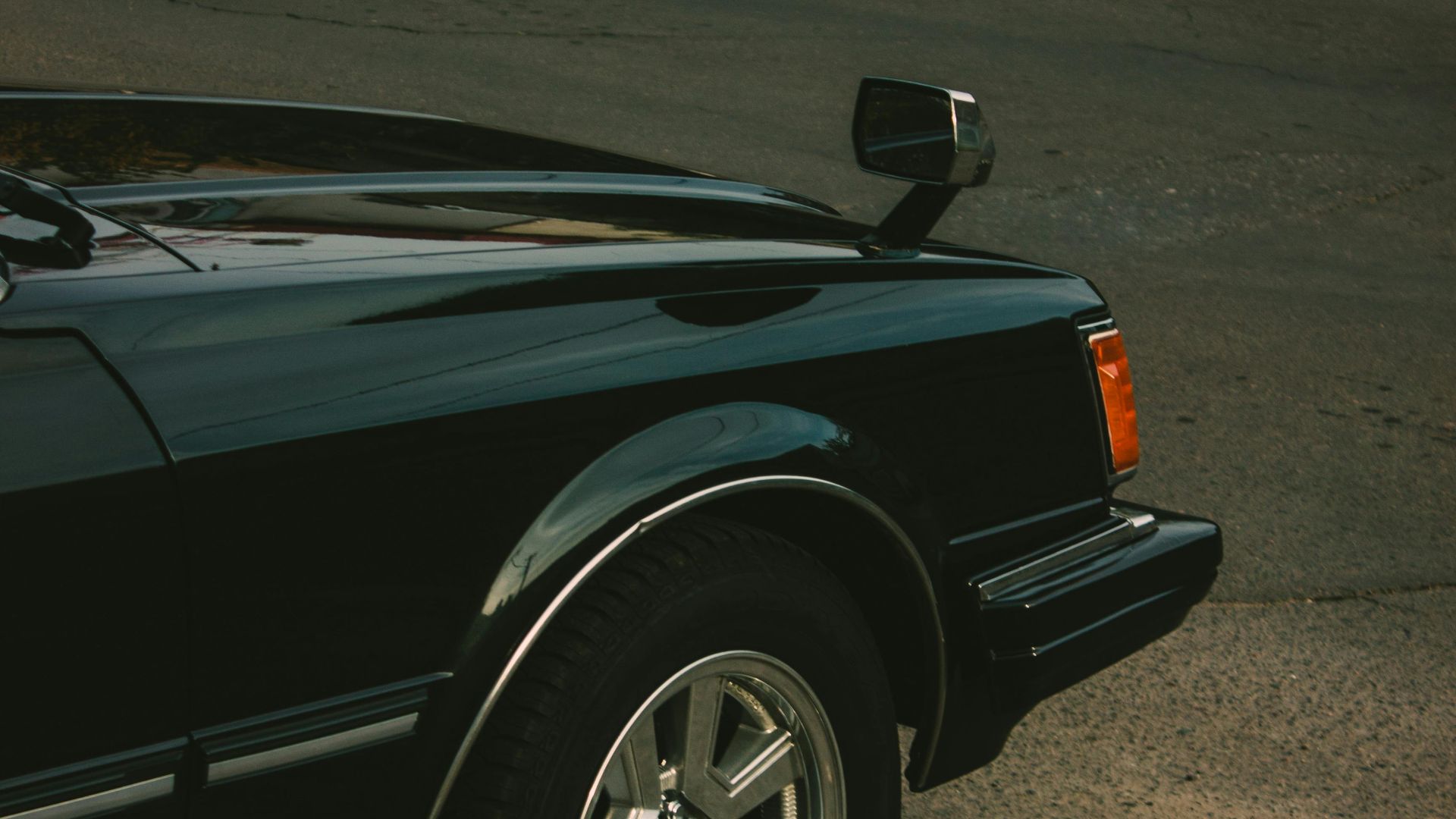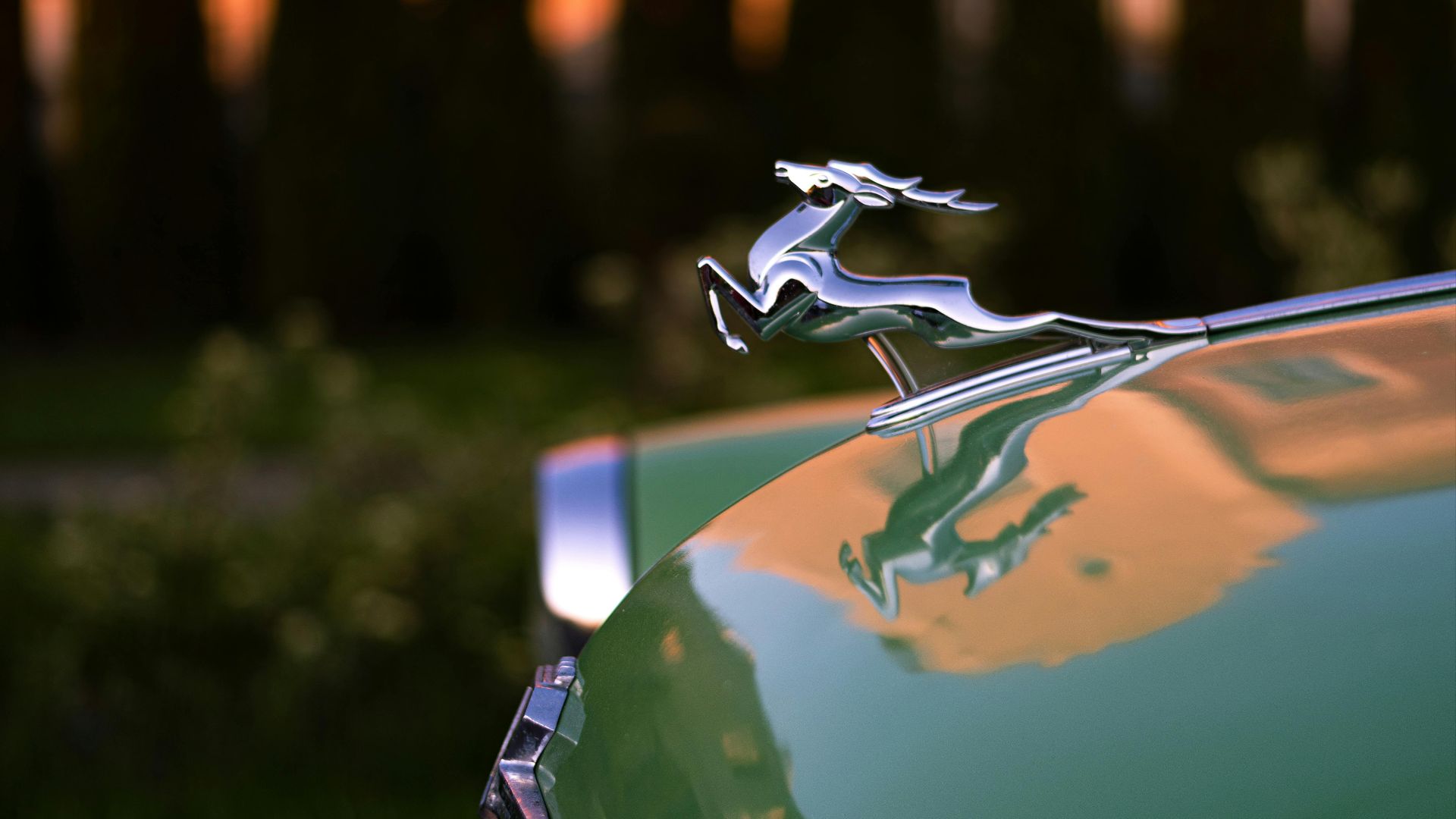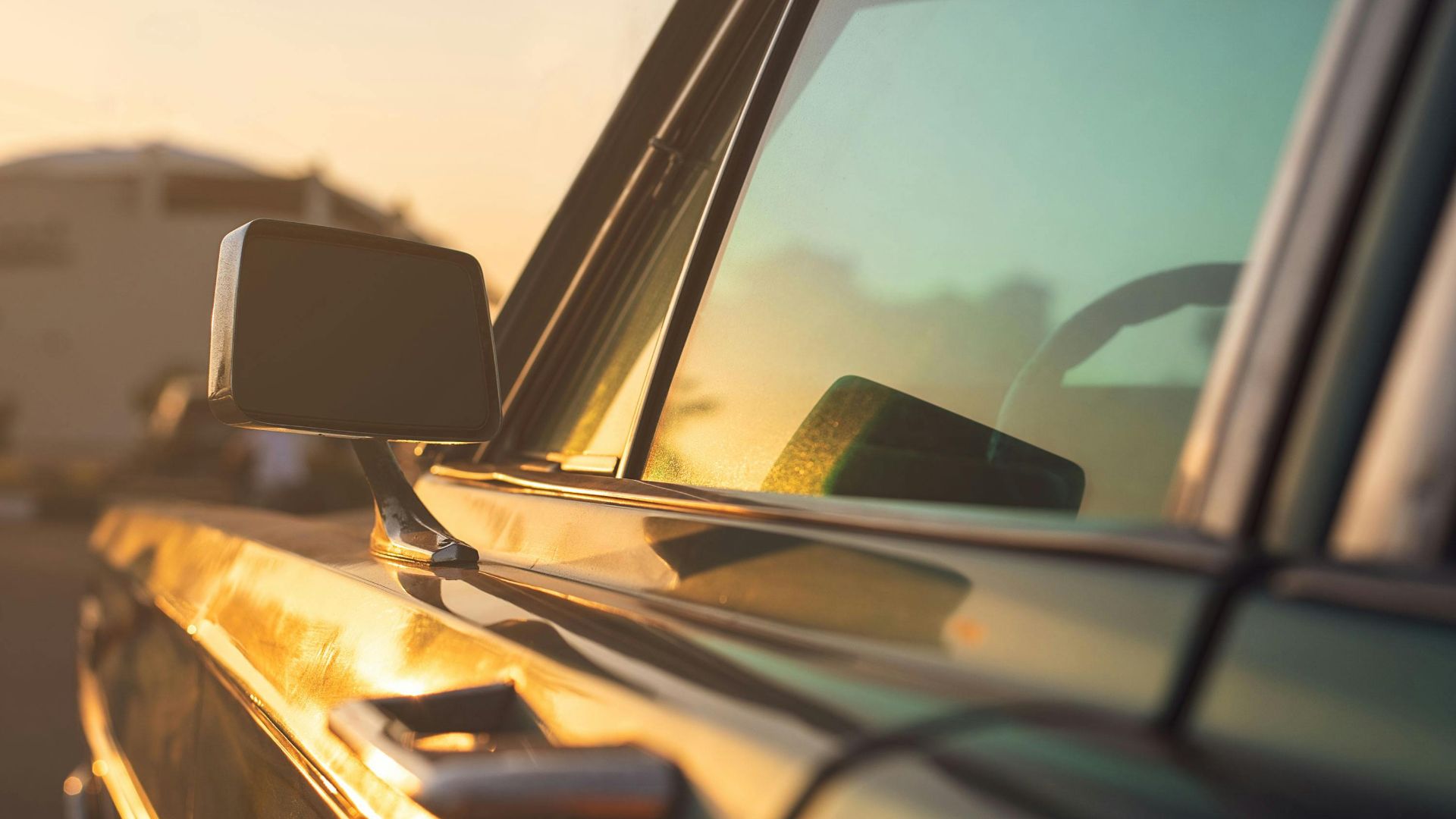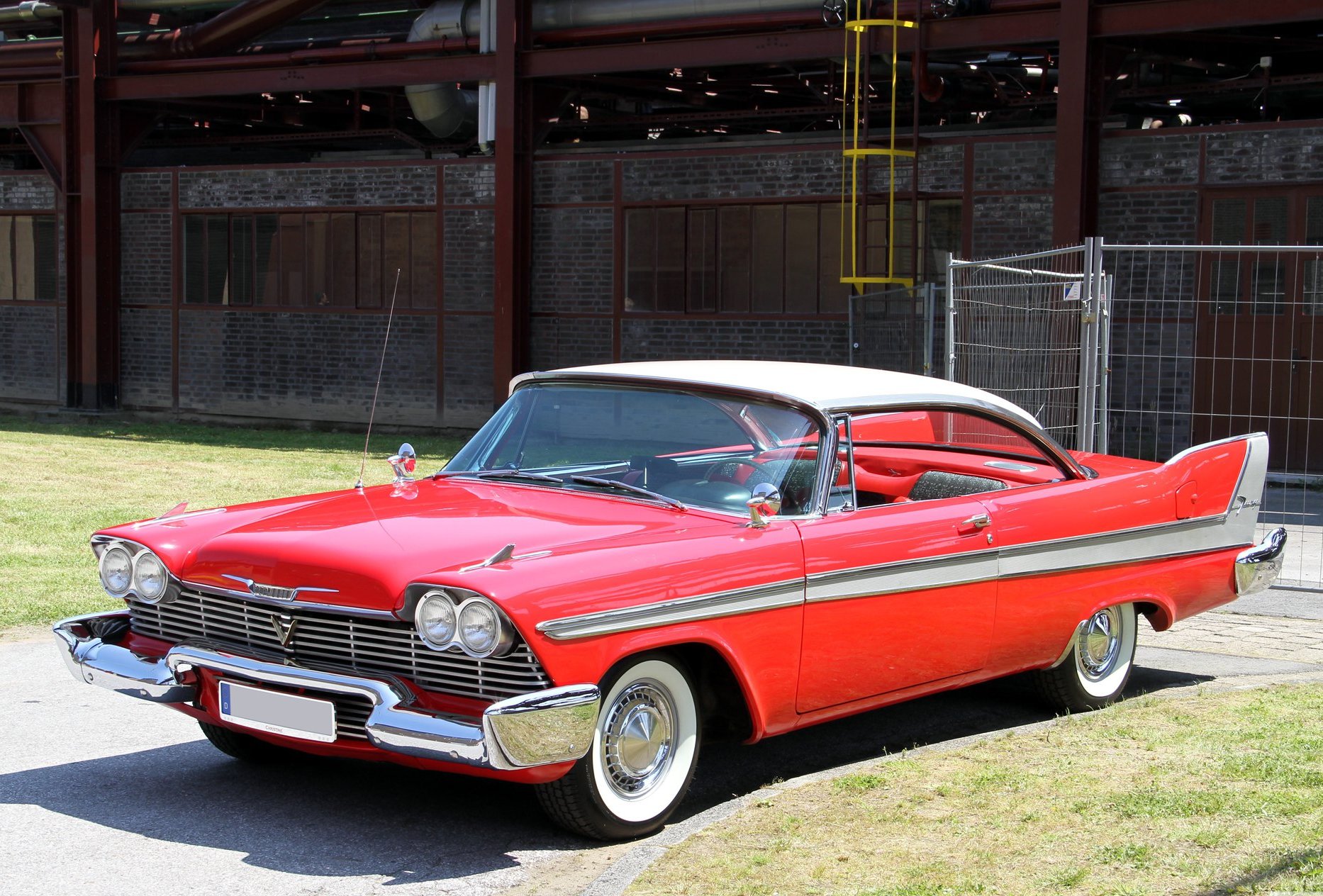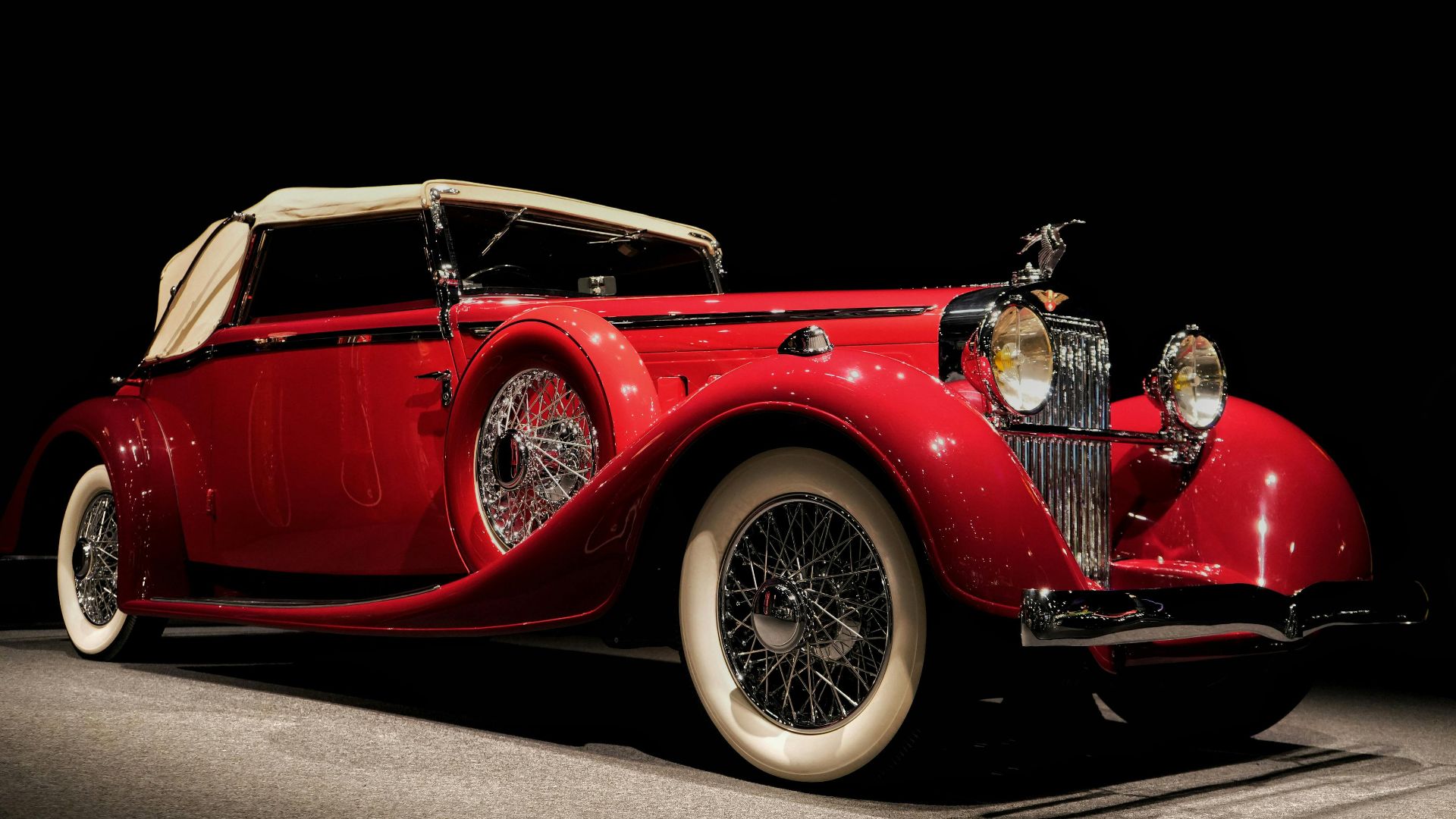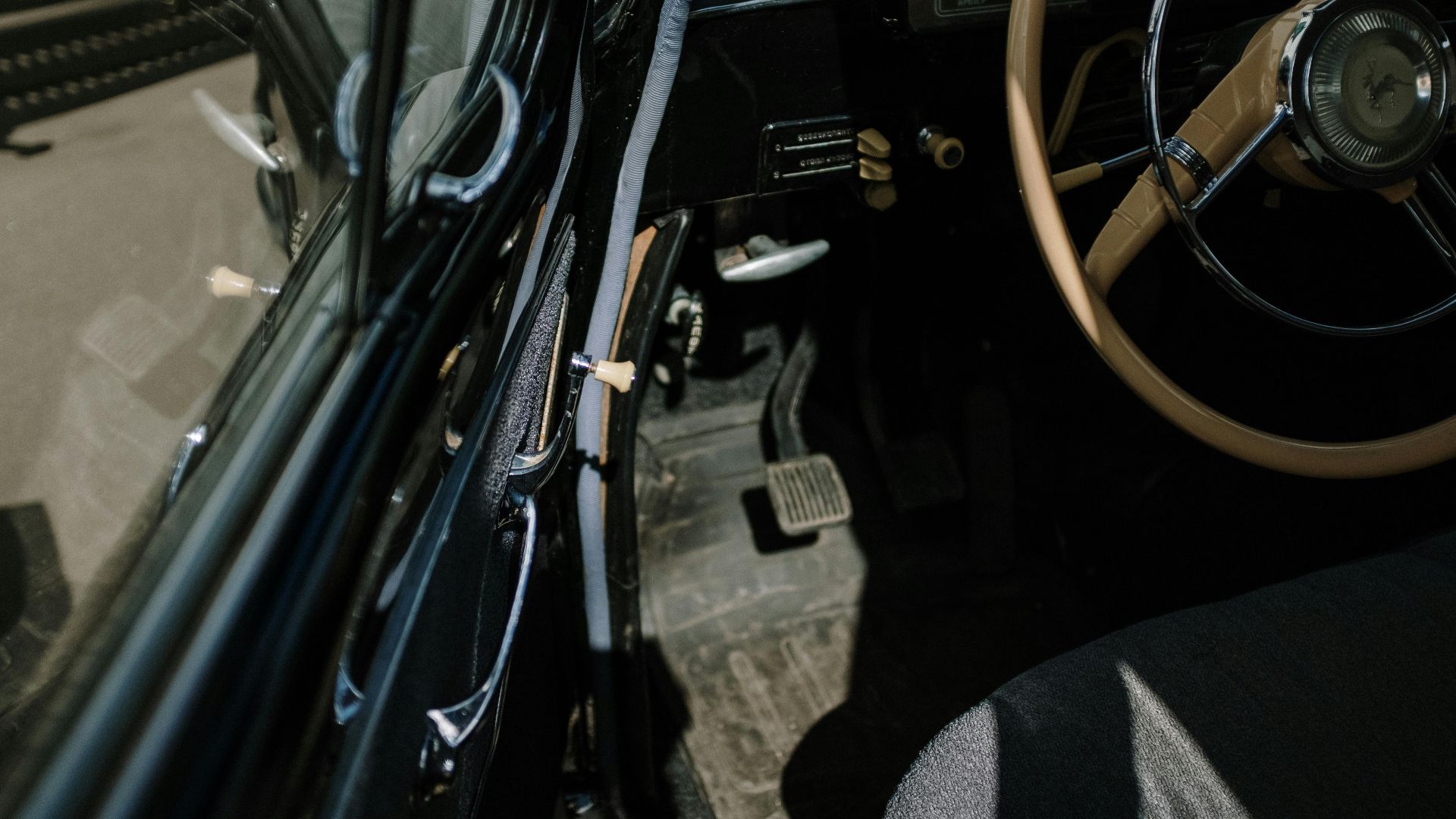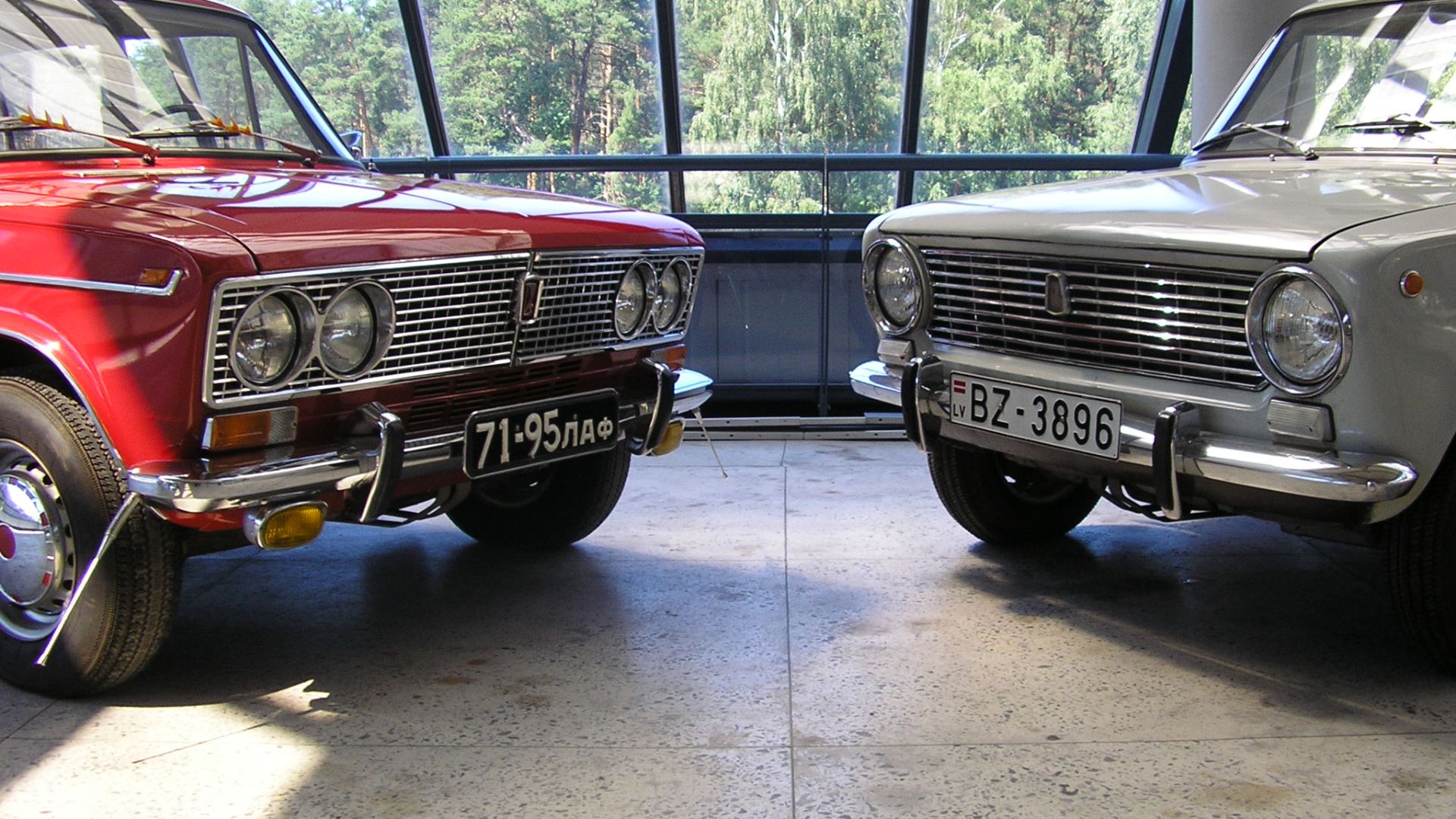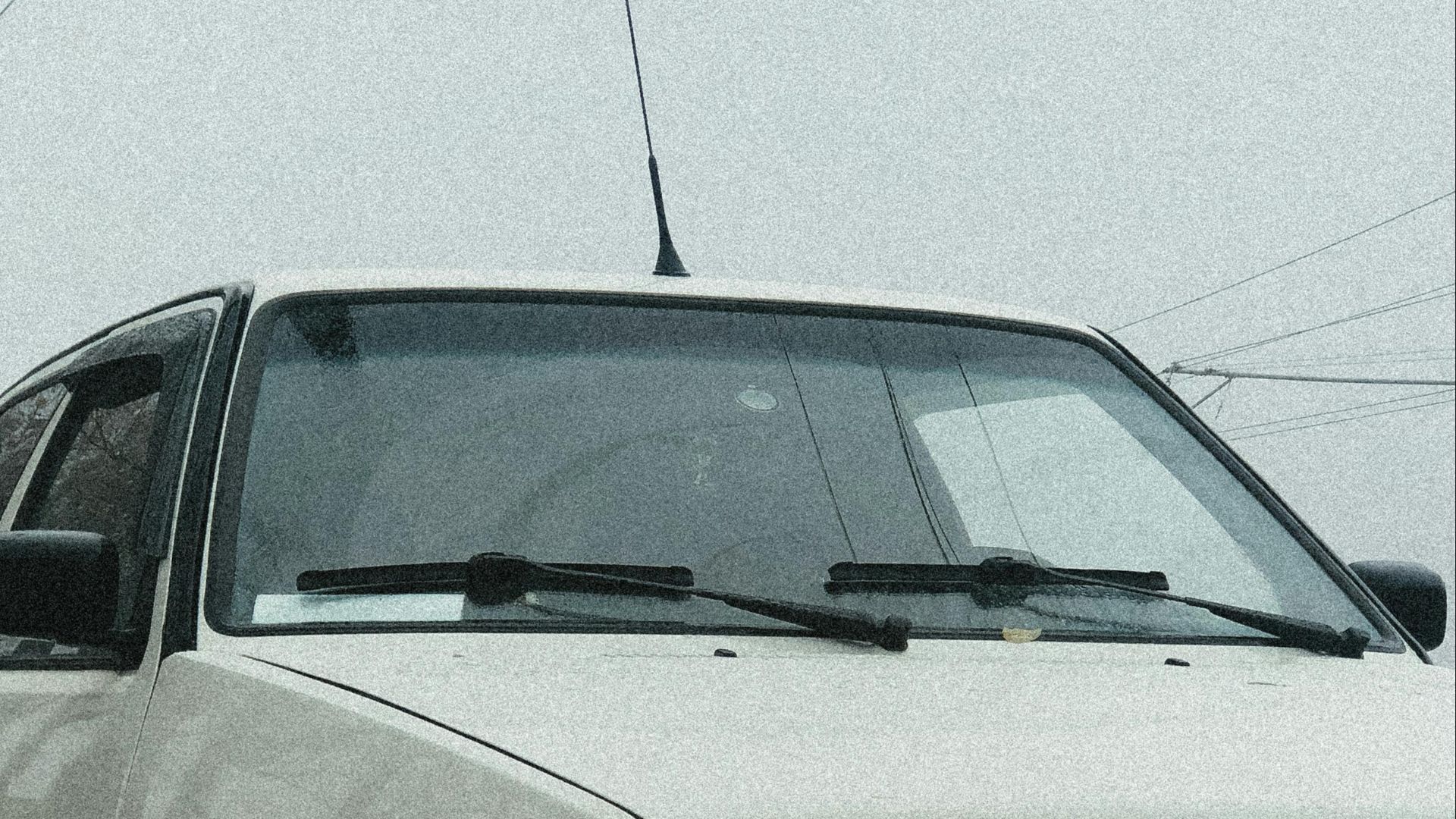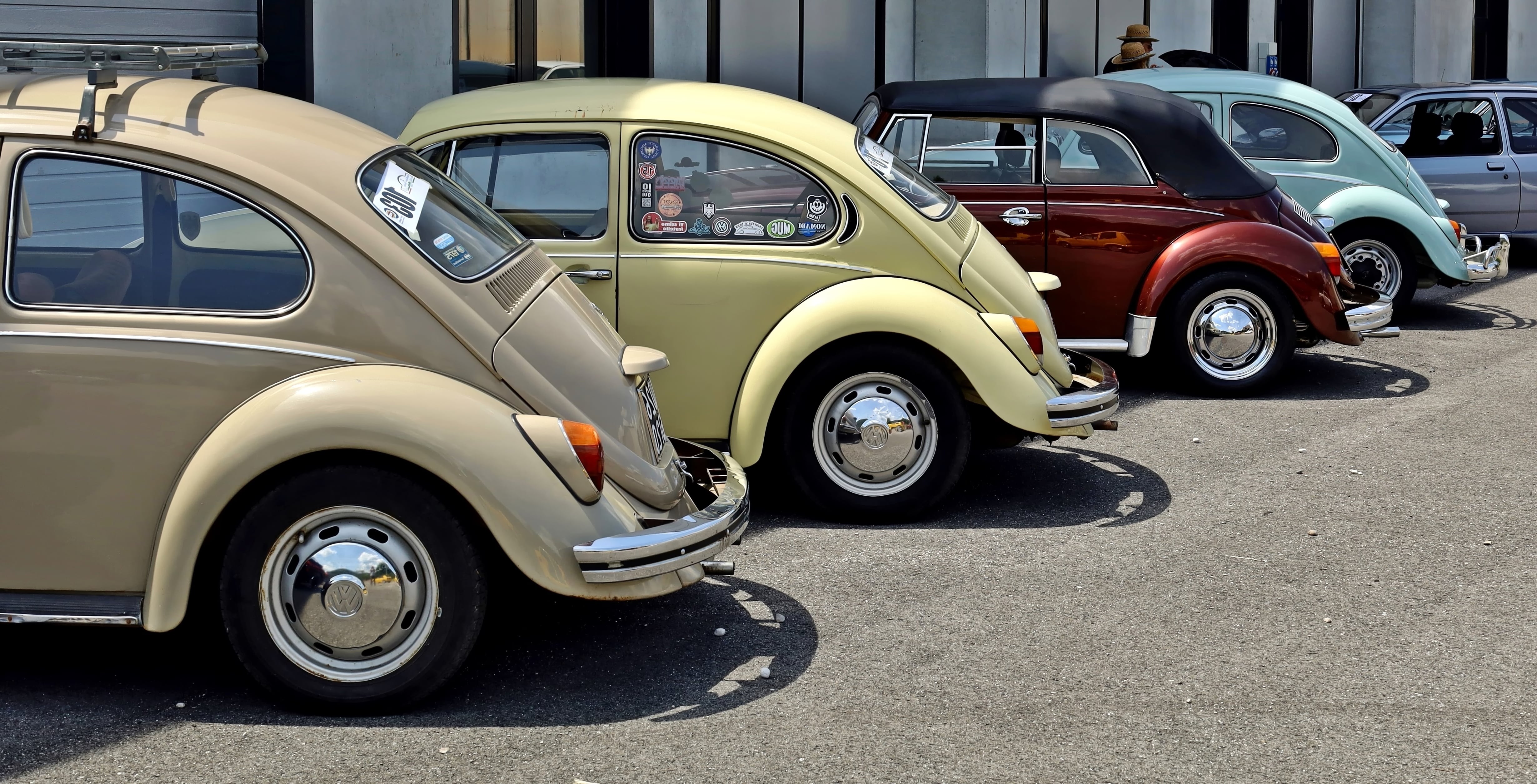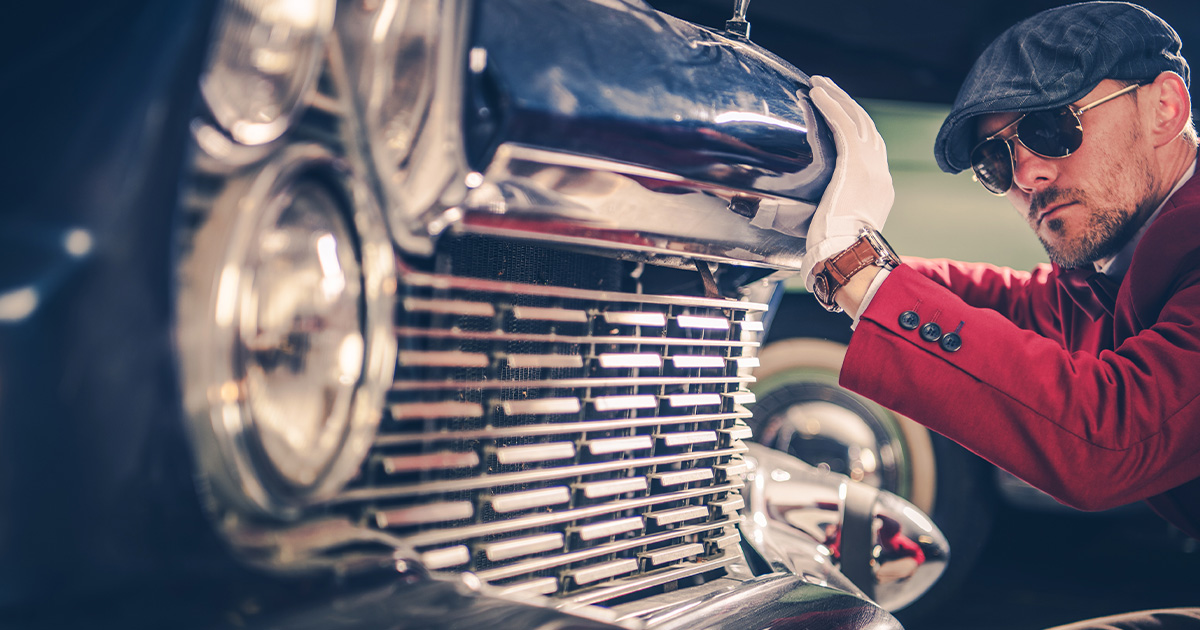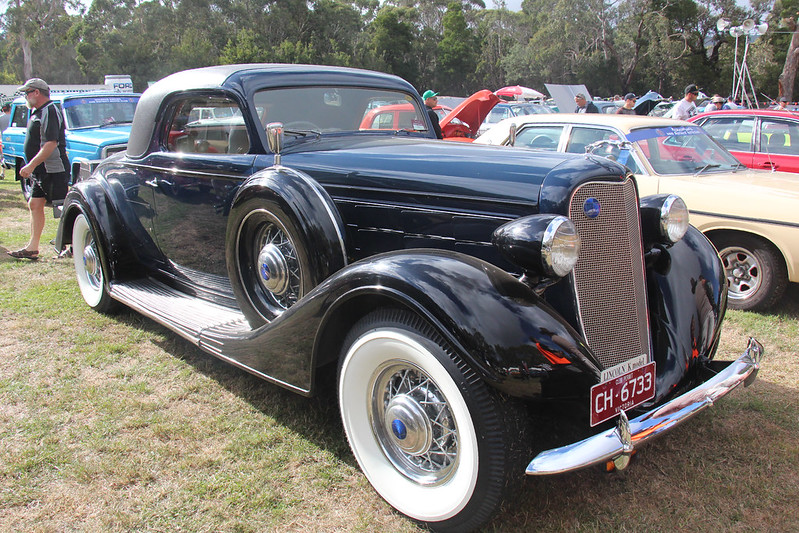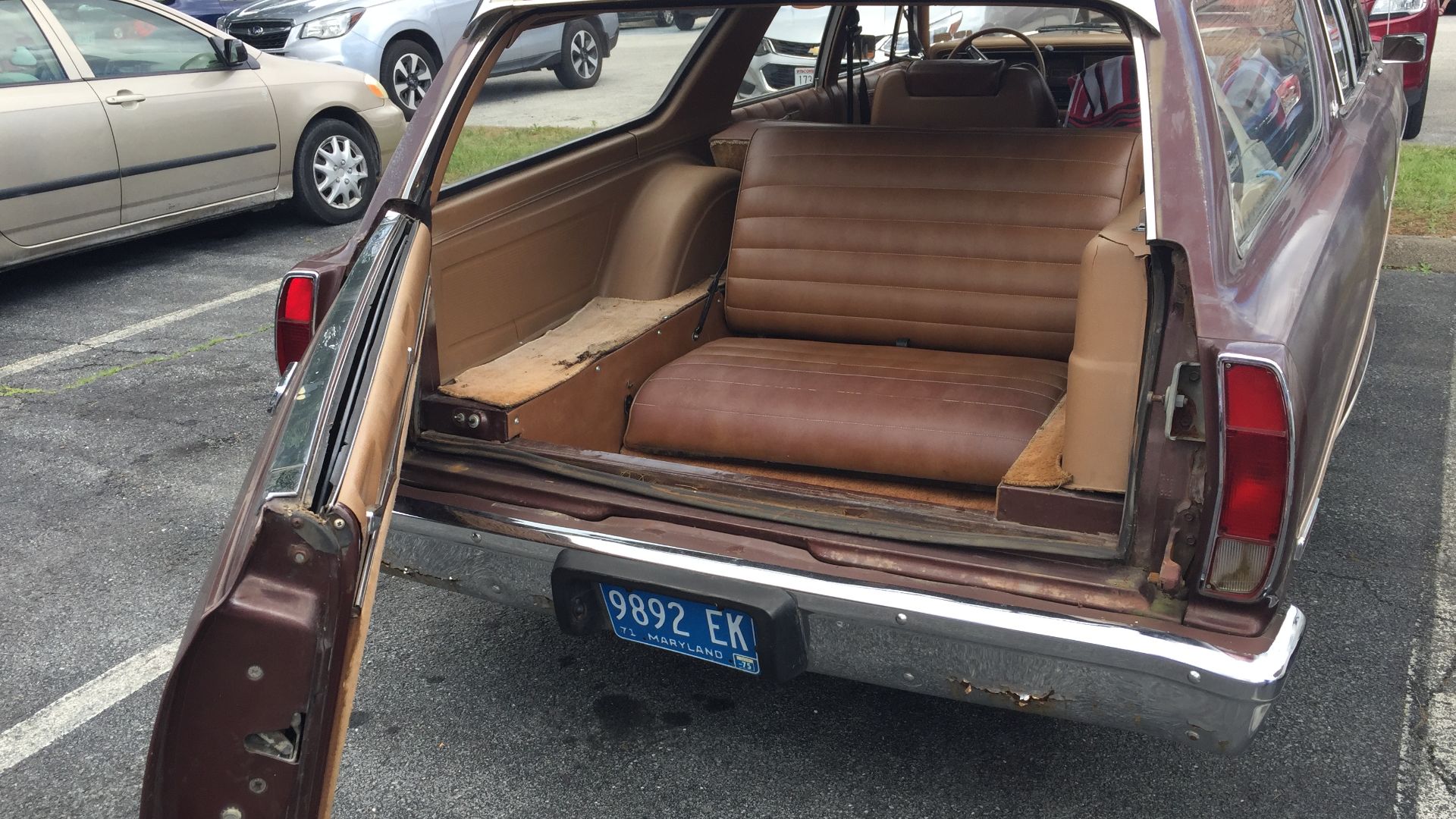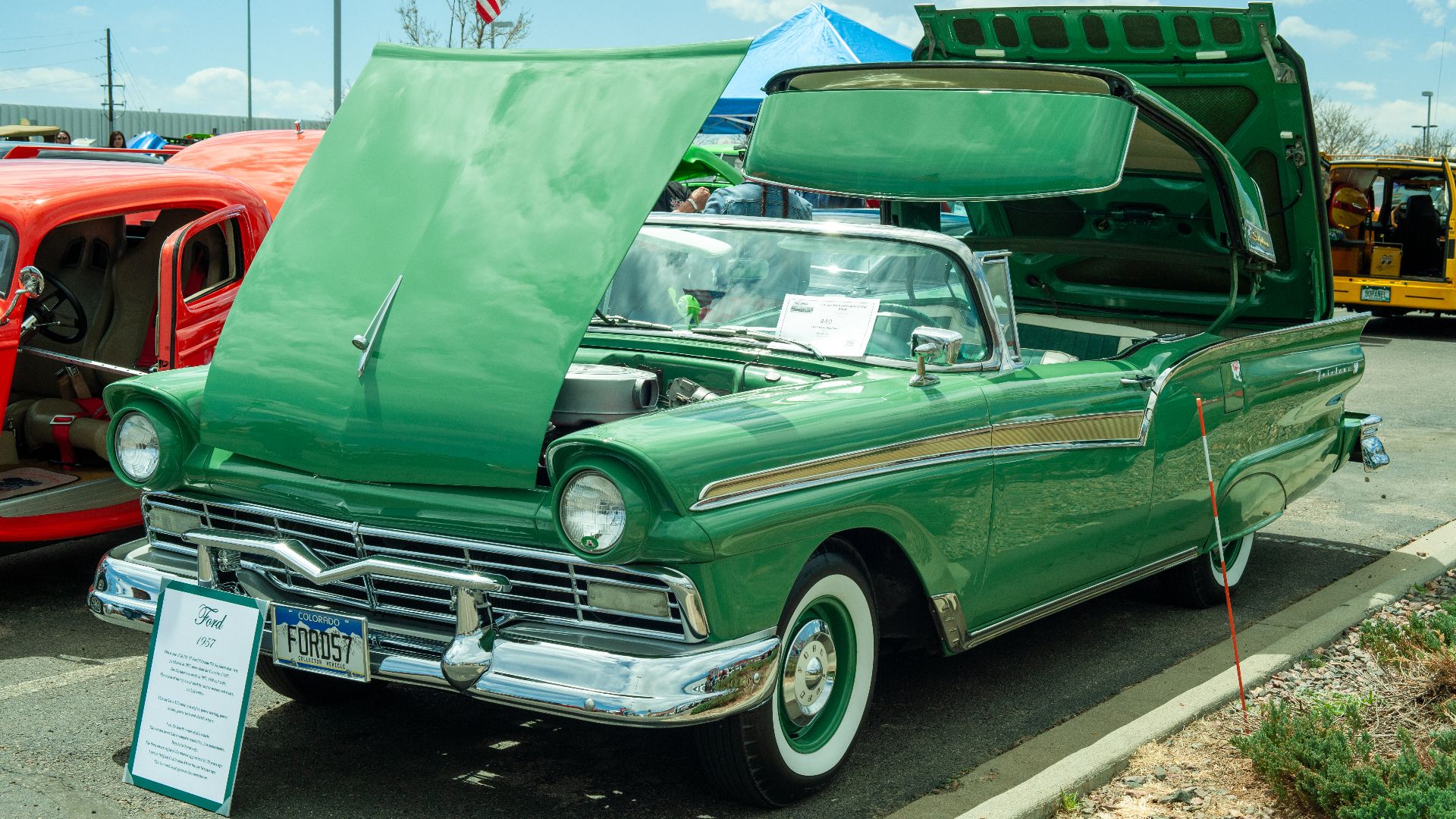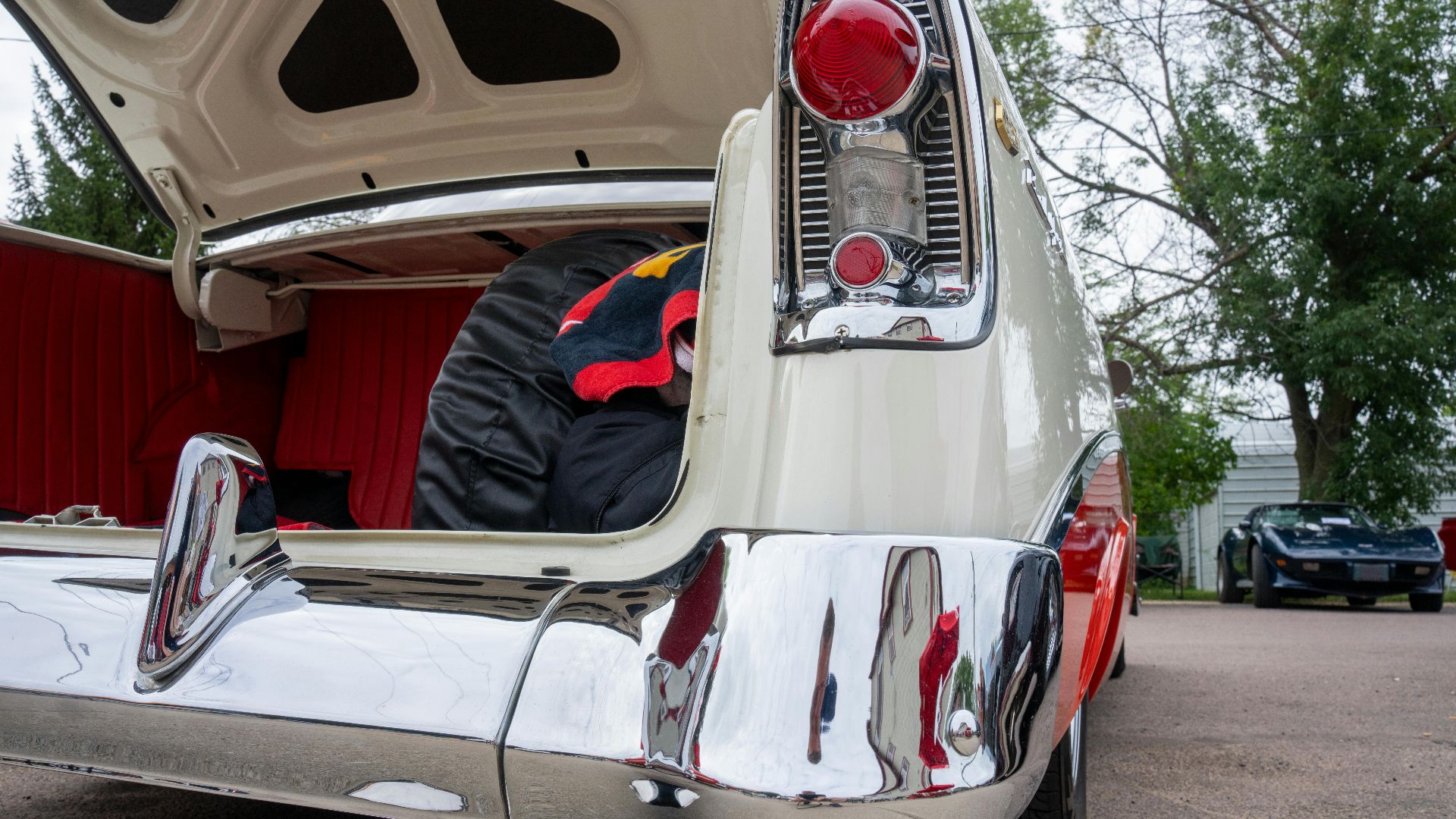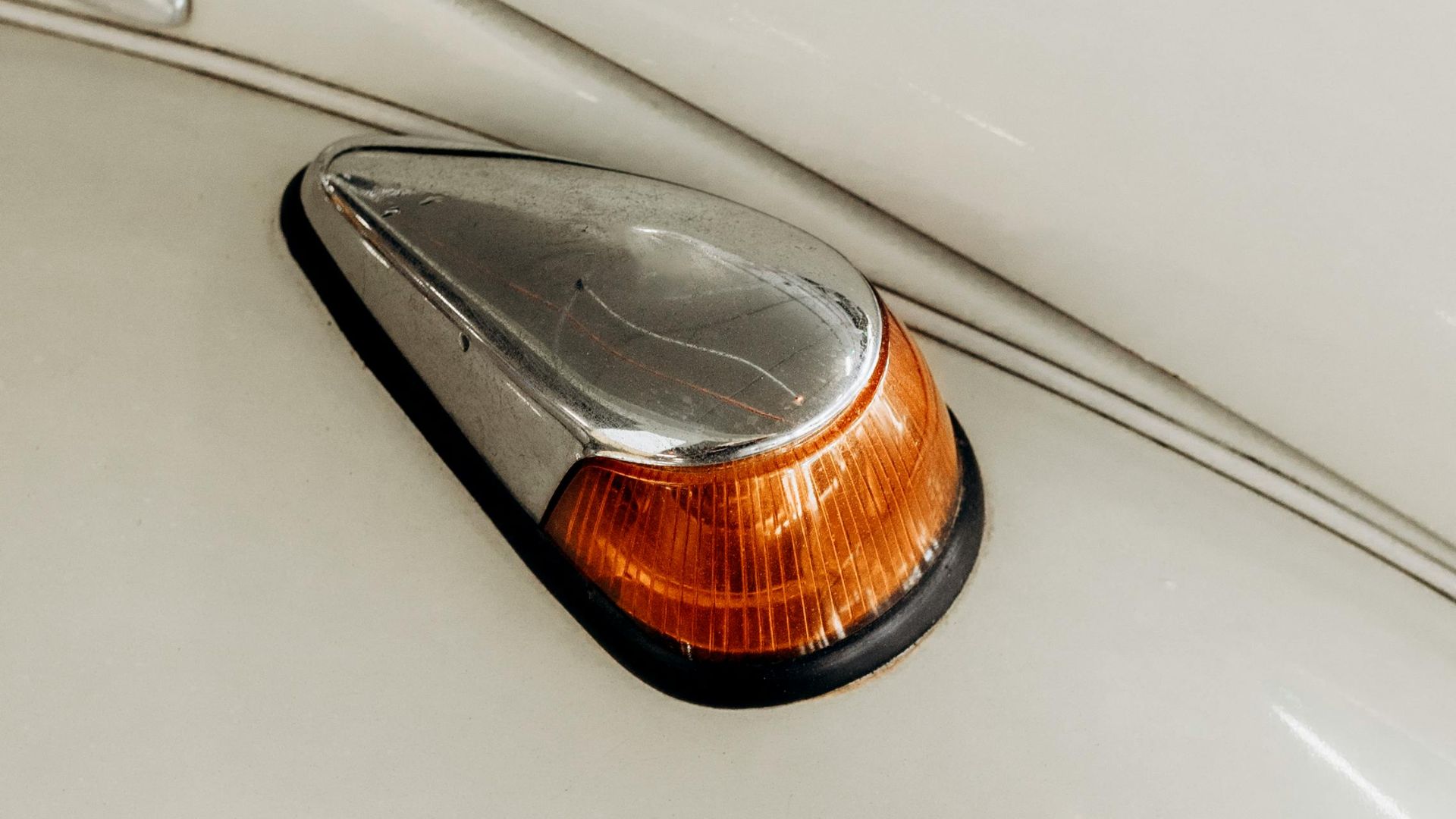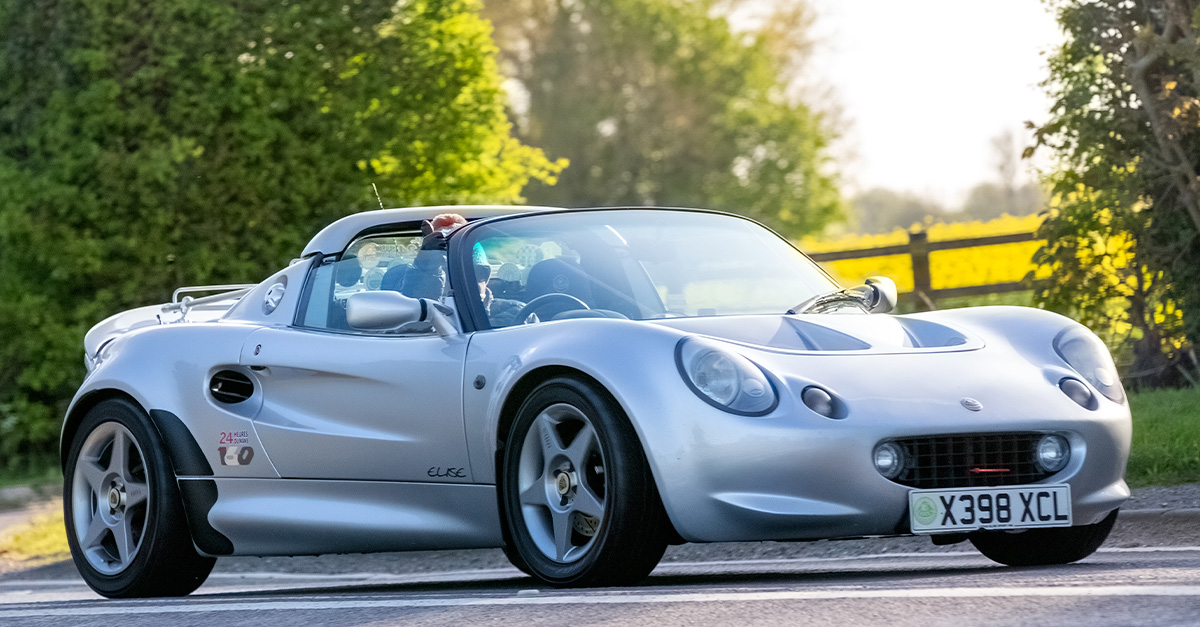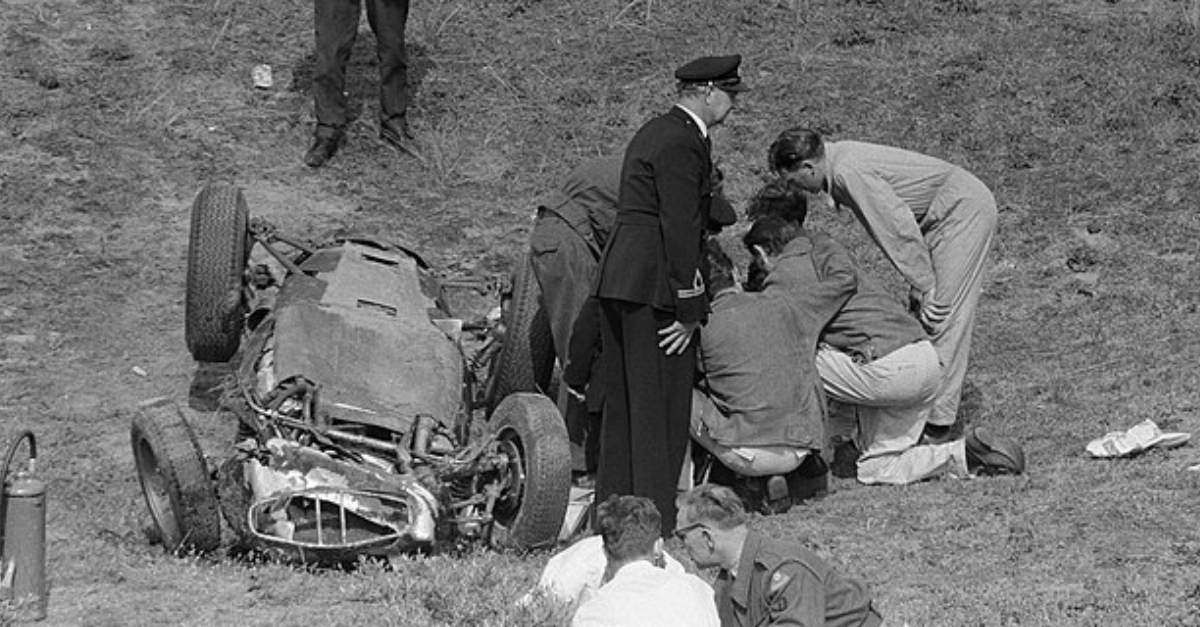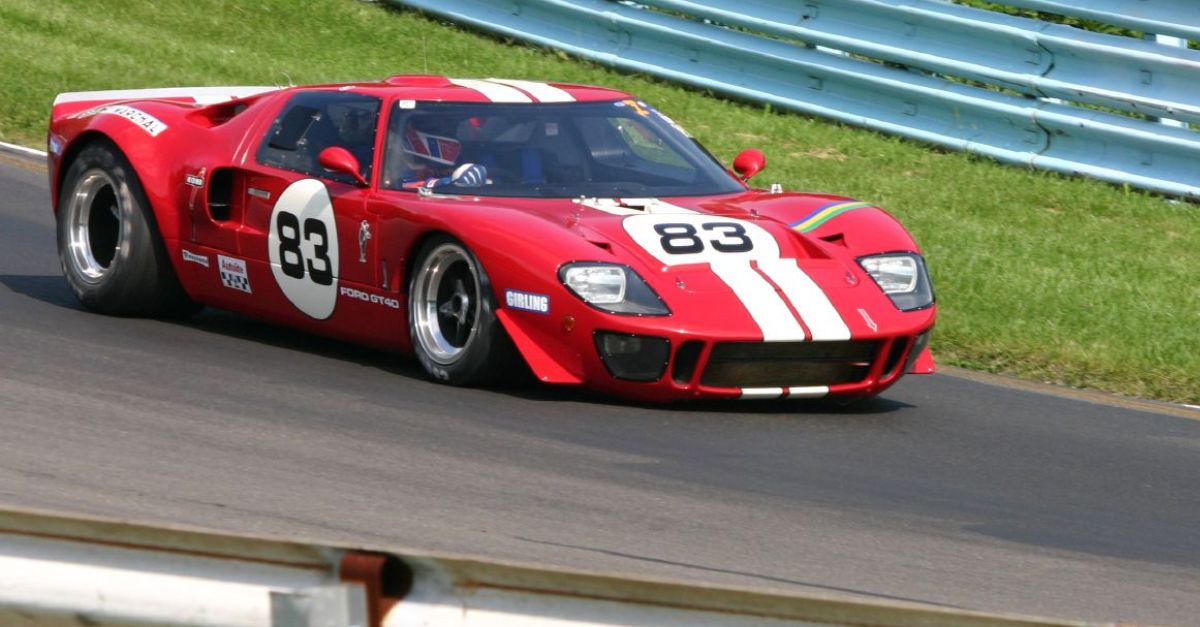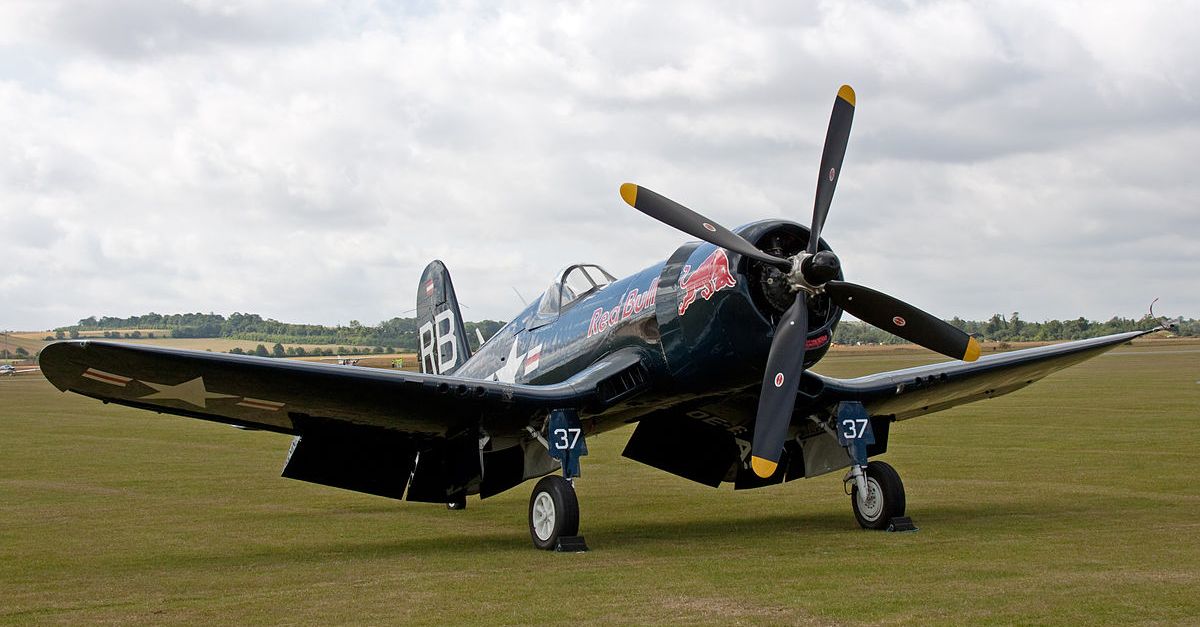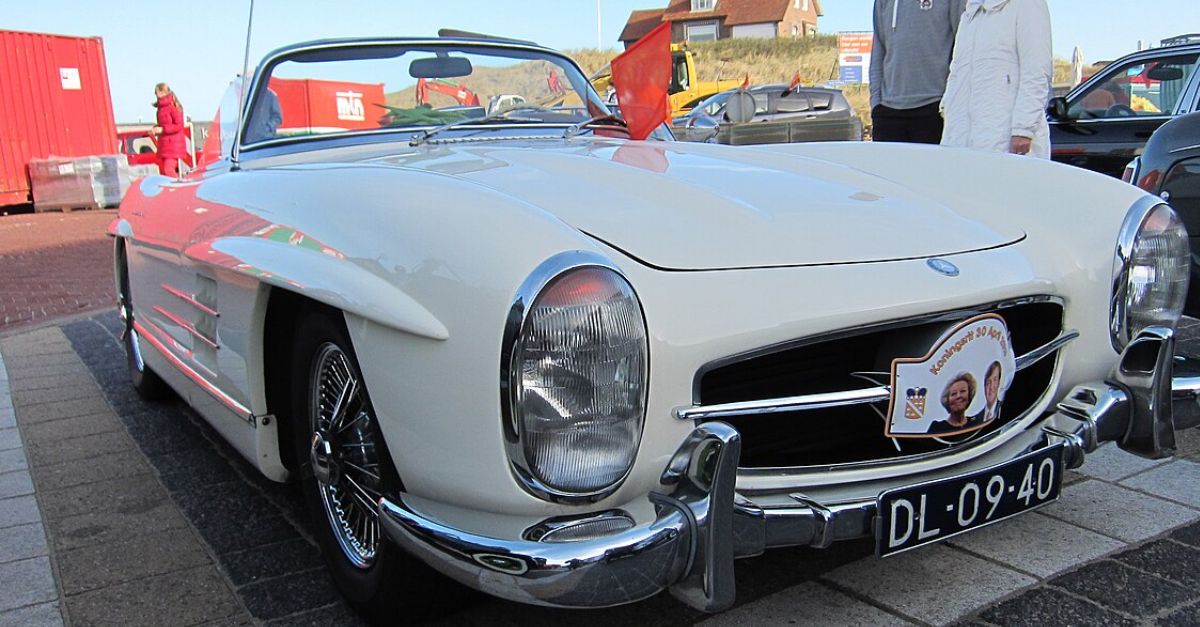Chrome Dreams and Tailfin Schemes
They don’t make cars like they used to—and sometimes, that’s a shame. From chrome-covered grilles to ashtrays in every door, classic cars had style, quirks, and personality modern vehicles often lack. Today, safety rules and streamlined designs have taken away many of the coolest vintage touches.
Let’s take a nostalgic road trip through those retro features we wish would make a comeback. Do you miss them as much as we do?
Fender-Mounted Mirrors
Back in the day, mirrors sat proudly on the fenders, giving drivers a futuristic, almost jet-plane feel. They weren’t always the most practical for visibility, but they looked undeniably cool. Today, everything is tucked into streamlined door mirrors—but wouldn’t a retro option spice things up?
Hood Ornaments That Meant Business
From the Spirit of Ecstasy to Pontiac’s Native American profiles, hood ornaments once declared brand identity in style. Now, pedestrian safety regulations have all but ended them. A shame—those little sculptures gave cars a touch of elegance and swagger.
Bench Seats Up Front
Instead of today’s bucket seats and giant consoles, many vintage cars had roomy bench seats up front. Perfect for sliding across to sit closer on date night—or cramming in one more passenger when needed. Practical? Not always. Missed? Absolutely.
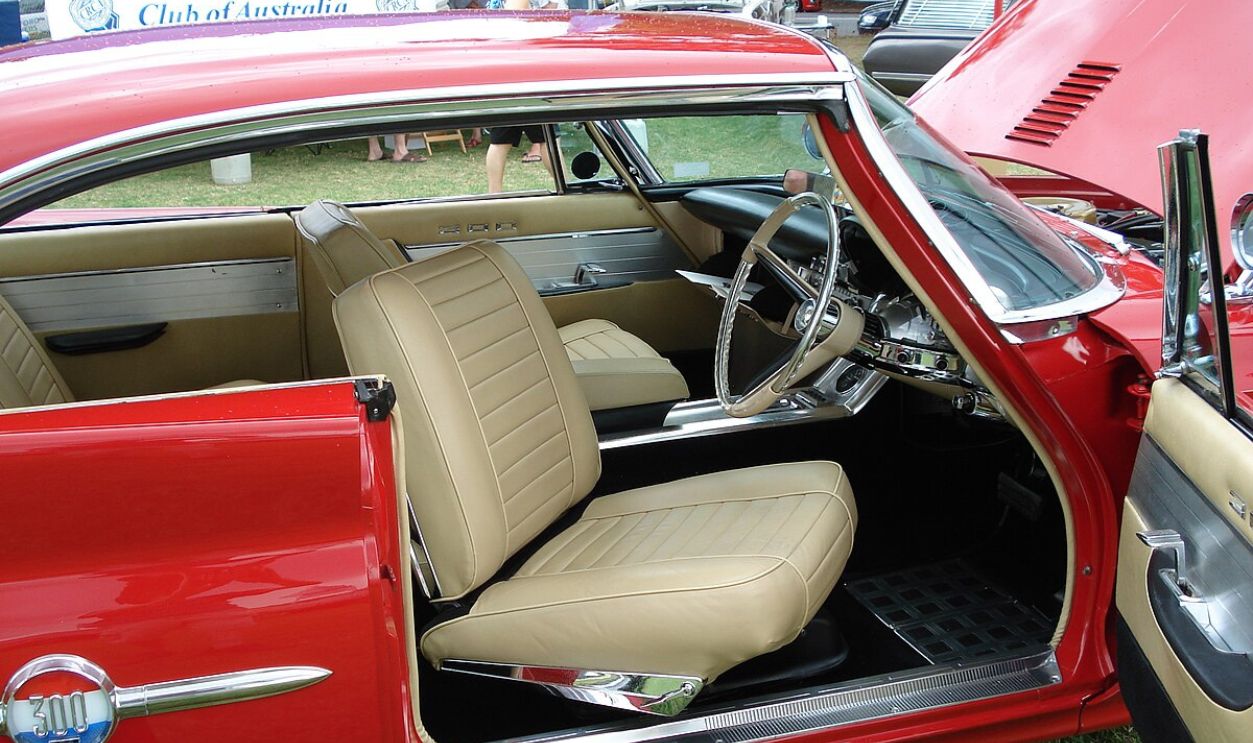 GTHO, CC BY-SA 3.0, Wikimedia Commons
GTHO, CC BY-SA 3.0, Wikimedia Commons
Wing Windows (a.k.a. Vent Windows)
These little triangular windows pivoted open to funnel fresh air straight into the cabin. No need to crank down the big window or blast the A/C. Plus, they looked delightfully old-school. Some hot rodders still love them, but they’ve mostly disappeared.
Push-Button Transmissions
Chrysler’s “PowerFlite” and other push-button transmissions made shifting feel futuristic in the ’50s and ’60s. Instead of a bulky shifter, you had neat buttons on the dash. Today, automakers flirt with rotary dials and electronic shifters—but the push-button vibe was peak space-age style.
Tailfins That Reached for the Sky
The 1950s obsession with rockets and jets gave us the iconic tailfin. Cadillac, Chrysler, and Chevy battled for the tallest, sharpest fins. Were they practical? No. Were they glorious works of automotive art? Absolutely.
Whitewall Tires
Whitewalls shouted style, especially when paired with chrome hubcaps. They screamed class and cool, whether on a Cadillac cruiser or a hot rod Ford. These days, they’re rare—mostly seen on restored classics or custom builds. But they always turn heads.
Floor-Mounted Dimmer Switches
Once upon a time, switching between high and low beams was done with your foot. A little button on the floor made night driving simple—and kept your hands on the wheel. It’s small, quirky details like this that made old cars so charming.
Hideaway Headlights
Few things looked cooler than headlights hidden behind flip-up doors or rotating panels. Think Chevy Camaro, Dodge Charger, or Buick Riviera. When they revealed themselves, it was like the car had a secret identity. Modern aerodynamics killed them, but we miss the drama.
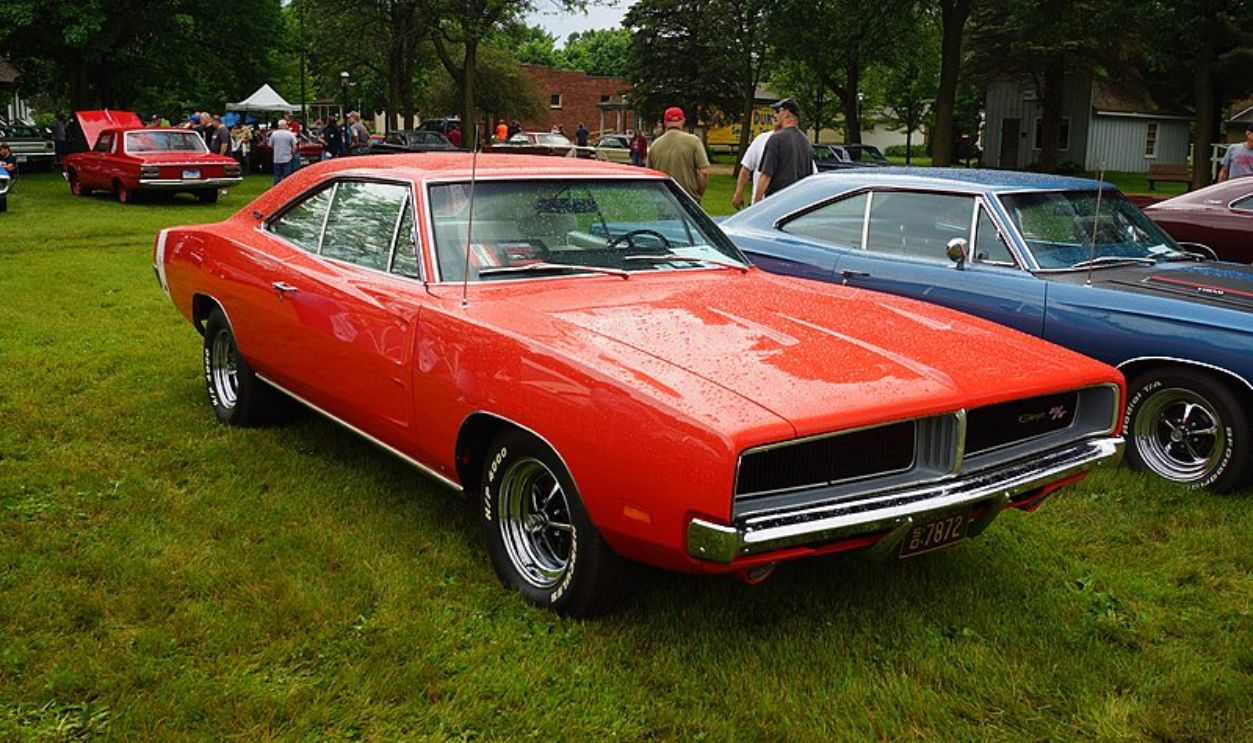 Greg Gjerdingen from Willmar, USA, CC BY 2.0, Wikimedia Commons
Greg Gjerdingen from Willmar, USA, CC BY 2.0, Wikimedia Commons
Curb Feelers
Those springy metal whiskers sticking off bumpers weren’t just stylish—they kept you from scraping your wheels. They’d make a scraping sound when you got too close to the curb. Functional, flashy, and just a little bit silly.
Opera Windows
Popular in the ’70s, these small porthole-like windows on vinyl-topped coupes were all about style, not function. They looked elegant and gave cars like the Lincoln Continental Mark IV a luxury vibe that’s sadly absent today.
 Jeremy from Sydney, Australia, Wikimedia Commons
Jeremy from Sydney, Australia, Wikimedia Commons
Retractable Antennas
Remember pulling up the chrome antenna before turning on the radio? Or watching power antennas rise smoothly when you fired up the stereo? Now, it’s all hidden wires and shark fins. Retro antennas had flair, and sometimes, that’s enough.
Vinyl Roofs
In the ’60s and ’70s, a vinyl roof was the height of luxury. It gave your sedan the appearance of a convertible without the hassle. Yes, they cracked and peeled eventually—but they looked sharp when new.
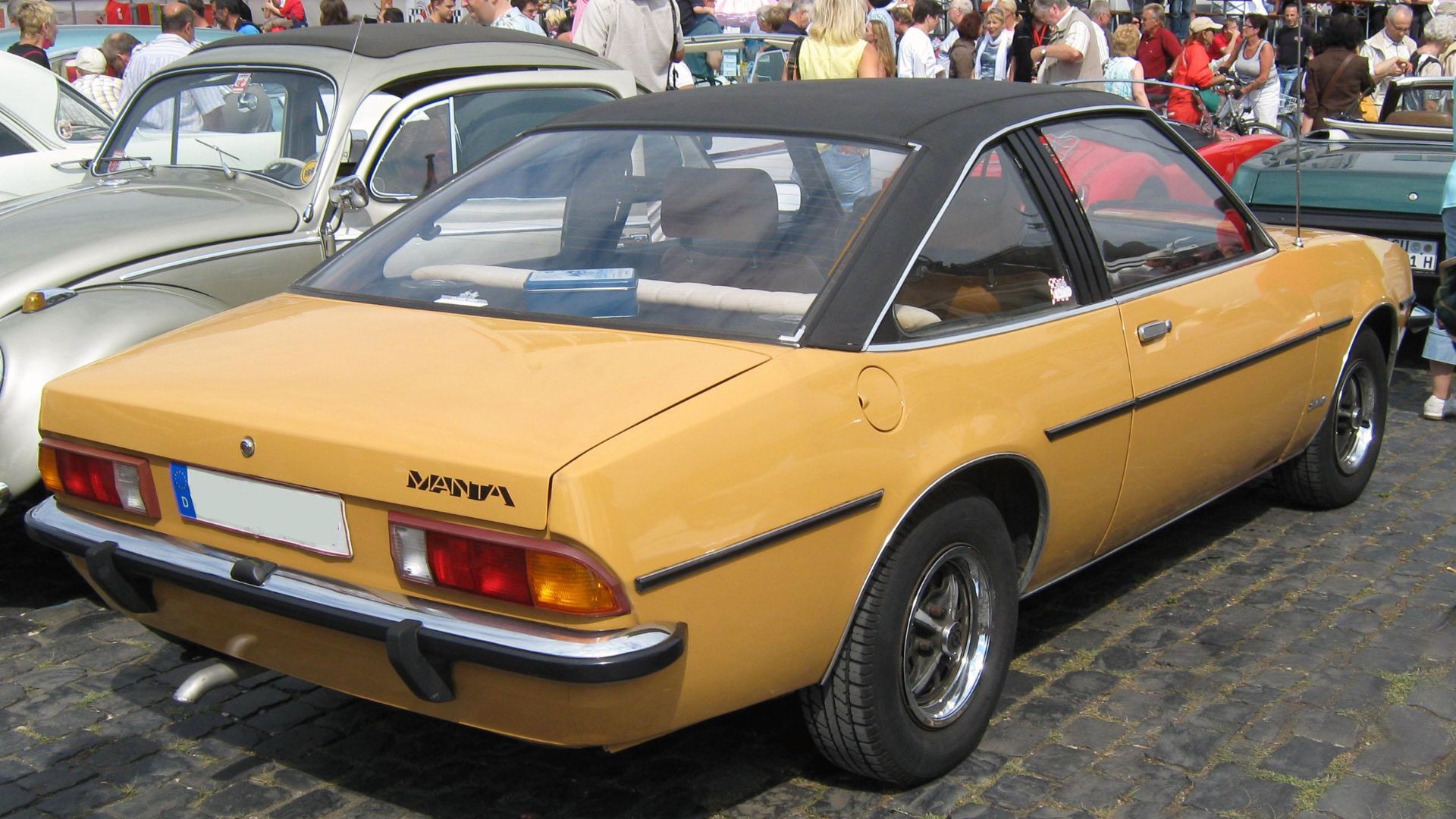 Kroelleboelle, Wikimedia Commons
Kroelleboelle, Wikimedia Commons
Hood Scoops That Actually Worked
Before cosmetic scoops became plastic fakes, they were functional performance features. Pontiac GTOs and muscle Mustangs sucked in real air through bold scoops. Nothing says “power under the hood” like a scoop that means business.
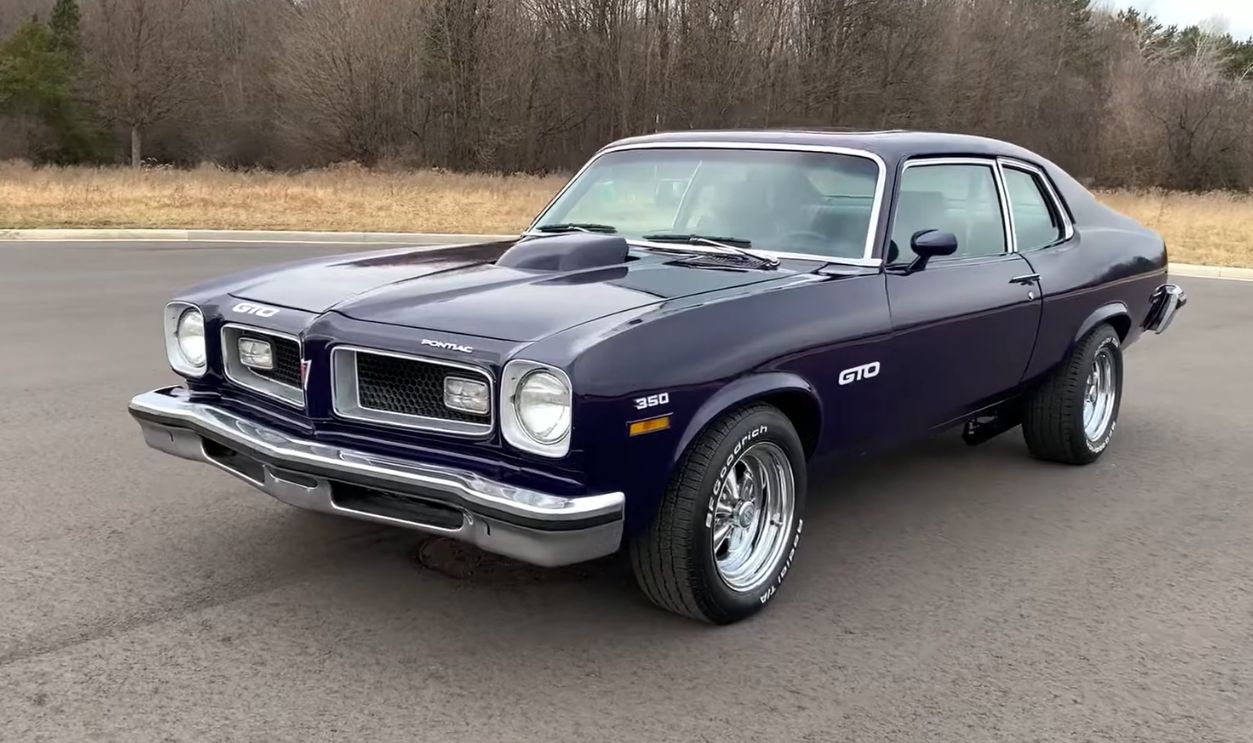 1974 Pontiac GTO, Kuyoth Klassics
1974 Pontiac GTO, Kuyoth Klassics
Pop-Out Rear Quarter Windows
Like vent windows for the back seat, these little hinged glass panels let passengers enjoy a breeze. They were simple, clever, and fun—way better than today’s sealed-back windows.
Column Shifters
Long before center consoles became the default, gear selectors lived on the steering column. They freed up space and gave cars a clean interior look. Sure, they weren’t sporty, but they made family cars feel practical and homey.
Chrome Everywhere
From bumpers to dashboards, chrome trim once reigned supreme. It gave cars a sparkle and shine modern matte finishes just can’t replicate. Sure, it was flashy—but isn’t that the point?
Spare Tire on the Back (Continental Kits)
Big luxury cars like Lincolns used to carry spare tires in proud rear-mounted housings. Called “Continental kits,” they gave cars a distinguished, upscale look. Today, spares are hidden—or gone entirely. Another stylish loss.
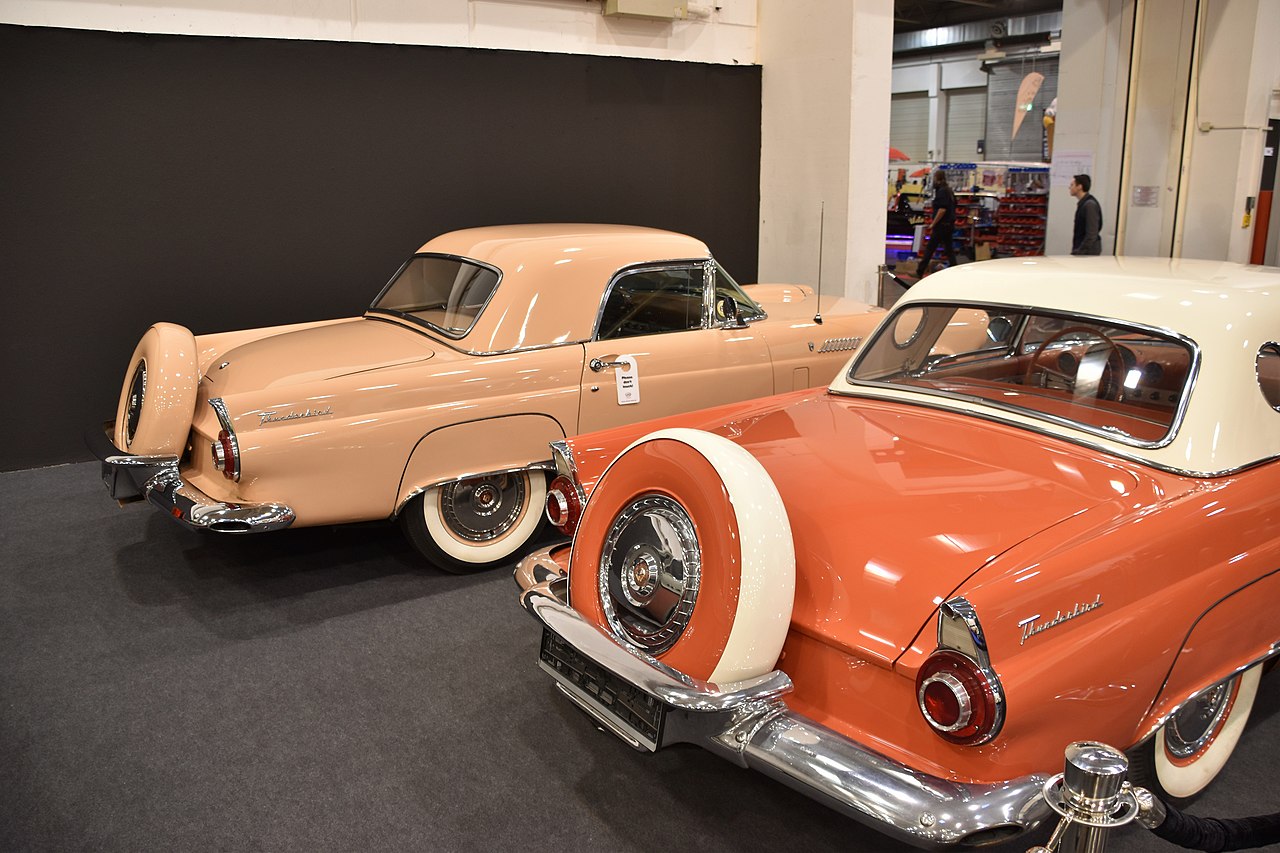 Charles, CC BY 2.0, Wikimedia Commons
Charles, CC BY 2.0, Wikimedia Commons
Headlight Wipers
Yes, some luxury cars had tiny windshield wipers for their headlights. Quirky? Definitely. Useful? Sometimes. But they added a sense of over-engineering charm we rarely see today.
Fold-Down Tailgates (Station Wagon Style)
Before SUVs ruled, wagons with tailgates that folded down—or even swung open sideways—were family staples. Perfect for picnics, ball games, and road trips. Minivans and SUVs are practical, but wagons had personality.
 Christopher Ziemnowicz, CC BY-SA 4.0, Wikimedia Commons
Christopher Ziemnowicz, CC BY-SA 4.0, Wikimedia Commons
Hood-Mounted Tachometers
Pontiac GTOs and other muscle cars sometimes placed the tach right on the hood. Drivers could glance out the windshield and see revs without taking eyes off the road. It was flashy, sporty, and made you feel like a racer.
Bubble Domes and Skylights
Some ’50s concept cars and a few production models featured bubble tops or panoramic skylights. They were futuristic, bold, and maybe impractical—but wow, did they make you feel like you were piloting a spaceship.
 Greg Gjerdingen, CC BY 2.0, Wikimedia Commons
Greg Gjerdingen, CC BY 2.0, Wikimedia Commons
Clamshell Tailgates
GM’s big wagons in the ’70s had two-piece tailgates where the glass slid into the roof and the gate dropped under the floor. A marvel of engineering—and endlessly fun for kids climbing in and out.
 Greg Gjerdingen from Willmar, USA, Wikimedia Commons
Greg Gjerdingen from Willmar, USA, Wikimedia Commons
Side-Mounted Spare Tires
Luxury cars in the ’30s often sported spares mounted in the fenders. They added elegance and gave the car a “ready-for-anything” attitude. A little impractical now, but undeniably classy.
Manual Chokes
Pulling out the choke knob on a cold morning felt mechanical and satisfying. Today’s fuel injection has made it unnecessary, but vintage enthusiasts still love the hands-on involvement.
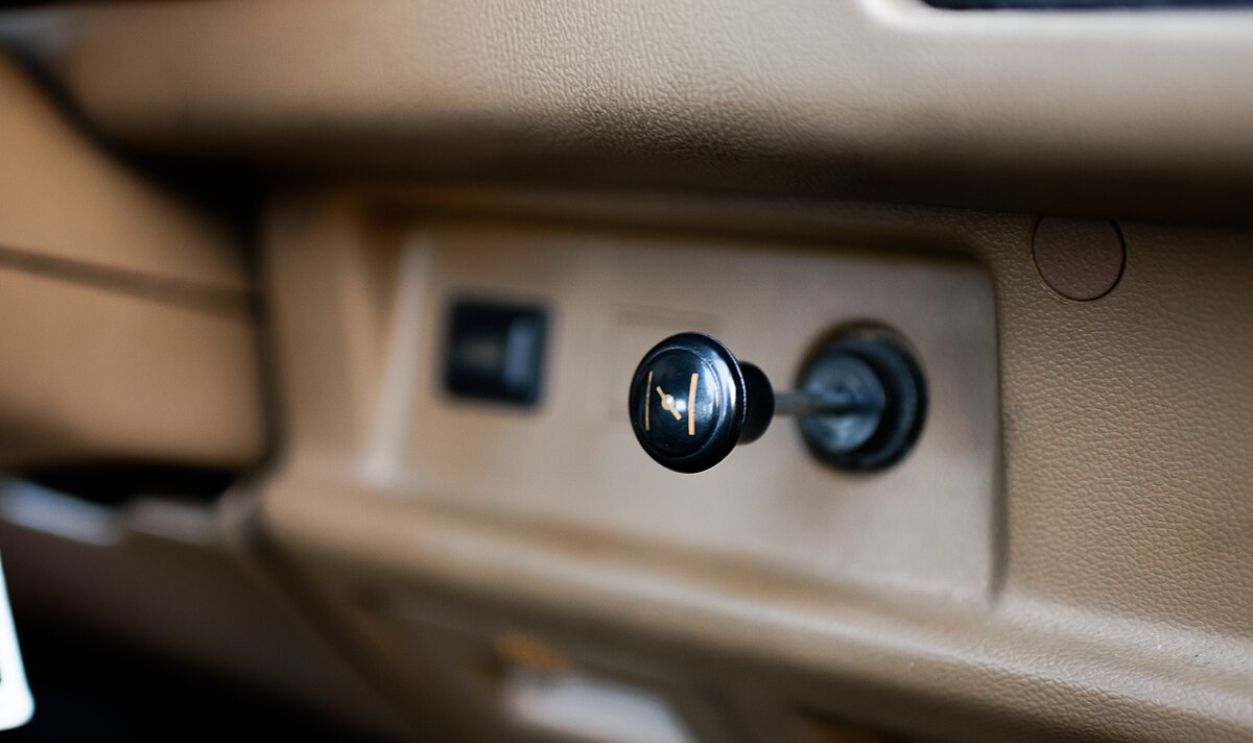 SealyPhoto, CC BY-SA 4.0, Wikimedia Commons
SealyPhoto, CC BY-SA 4.0, Wikimedia Commons
Analog Clock Faces
Digital dashes are sleek, but nothing beats the elegance of a ticking analog clock on the dash. Lincoln, Cadillac, and even Chrysler once made dashboard clocks a mark of luxury.
Fender Skirts
These half-covers over rear wheels gave cars a streamlined, smooth look. Popular in the ’40s and ’50s, they made sedans and coupes look futuristic. Now, they’re rare outside of custom builds.
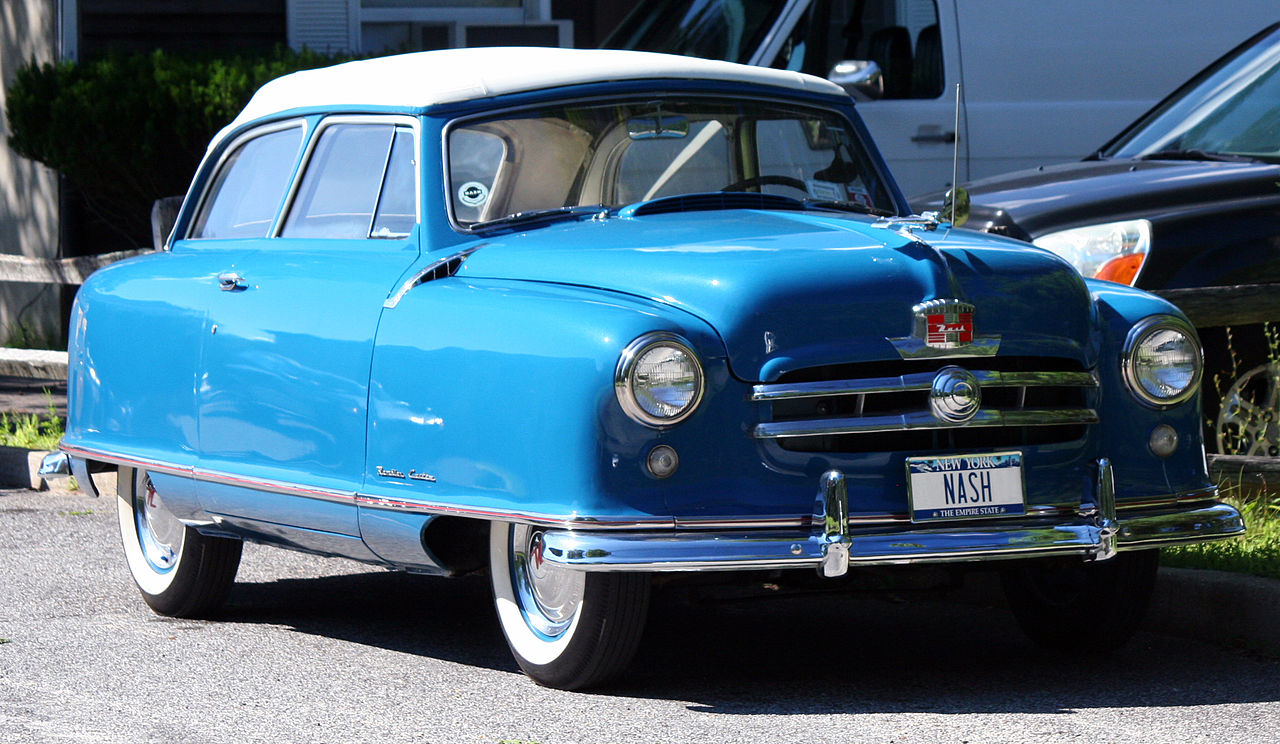 Mr.choppers, CC BY-SA 3.0, Wikimedia Commons
Mr.choppers, CC BY-SA 3.0, Wikimedia Commons
Rear-Facing Third Seats in Wagons
Before third rows folded into the floor, station wagons offered rear-facing benches in the cargo area. Kids loved waving (and making faces) at cars behind. It wasn’t the safest, but it was unforgettable.
Crank Windows
Yes, power windows are easier, but there’s something satisfying about manually cranking your window down. No motors to break, no electronics to fry—just a simple, mechanical action that always worked.
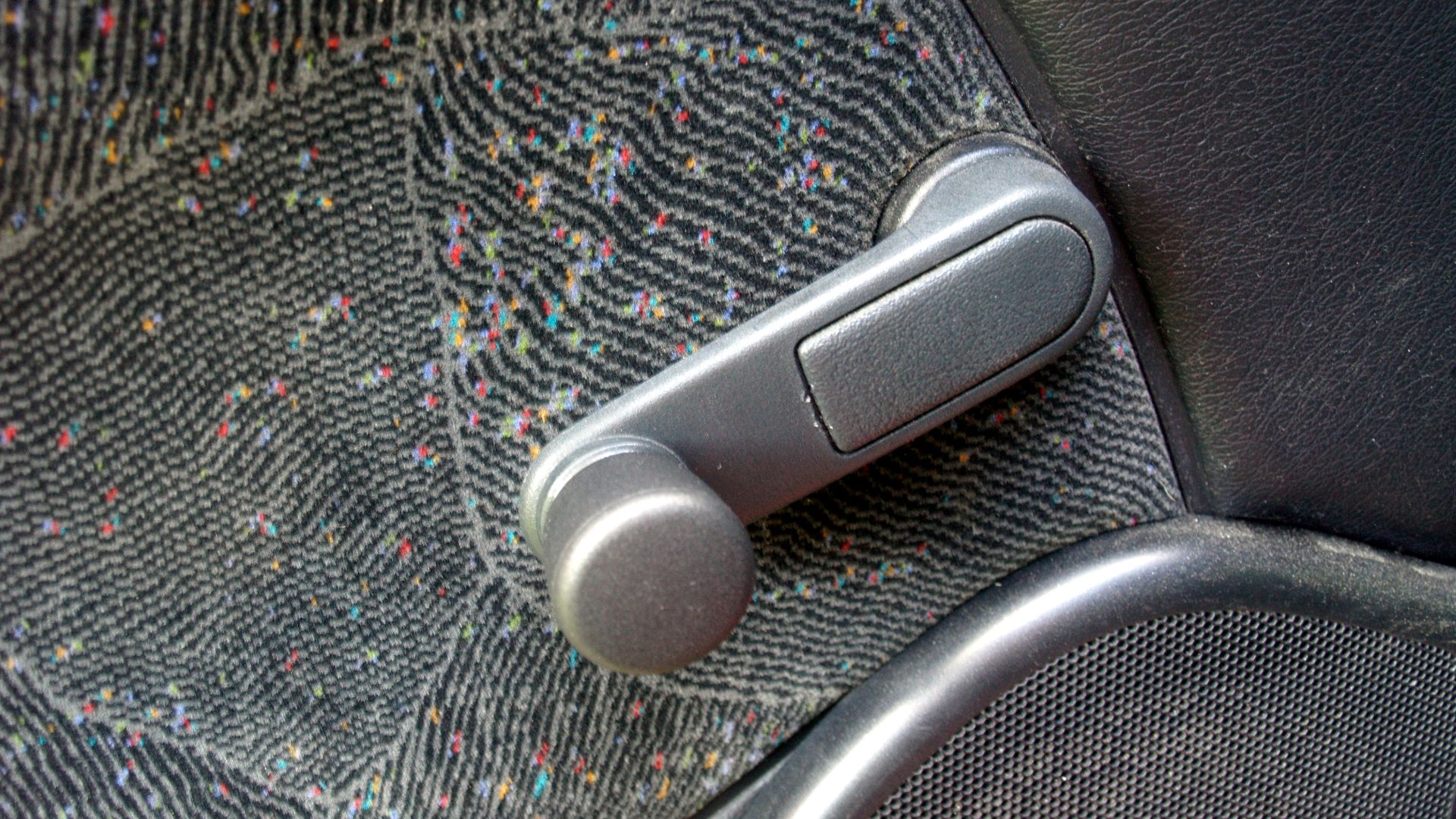 Santeri Viinamäki, Wikimedia Commons
Santeri Viinamäki, Wikimedia Commons
Retractable Hardtops (Before They Were Complicated)
Some ’50s Fords and ’60s Thunderbirds had retractable hardtops that worked with elegant simplicity. Modern versions are complex and heavy, but the vintage ones had a certain magic about them.
Extra-Large Trunks
Classic sedans boasted trunks big enough to swallow multiple suitcases—or, as enthusiasts joke, “a couple of bodies.” Today’s cars sacrifice space for style, but back then, storage was king.
Colorful Interiors
Red velour, turquoise vinyl, or two-tone dashboards—cars used to embrace bold colors inside. Now, most interiors are black, gray, or beige. Functional, sure. Fun? Not so much.
 Reinhold Möller, CC BY-SA 4.0, Wikimedia Commons
Reinhold Möller, CC BY-SA 4.0, Wikimedia Commons
Turn Signal Indicators on the Fender
Little arrow-shaped lights on the fenders flashed when you signaled. Pedestrians and other drivers could see them, and they looked stylish at night. A simple touch that’s all but forgotten.
Wraparound Windshields
A design staple of the ’50s, these curved windshields looked futuristic and gave panoramic views. They were more expensive to replace, but boy, did they make a car look sharp.
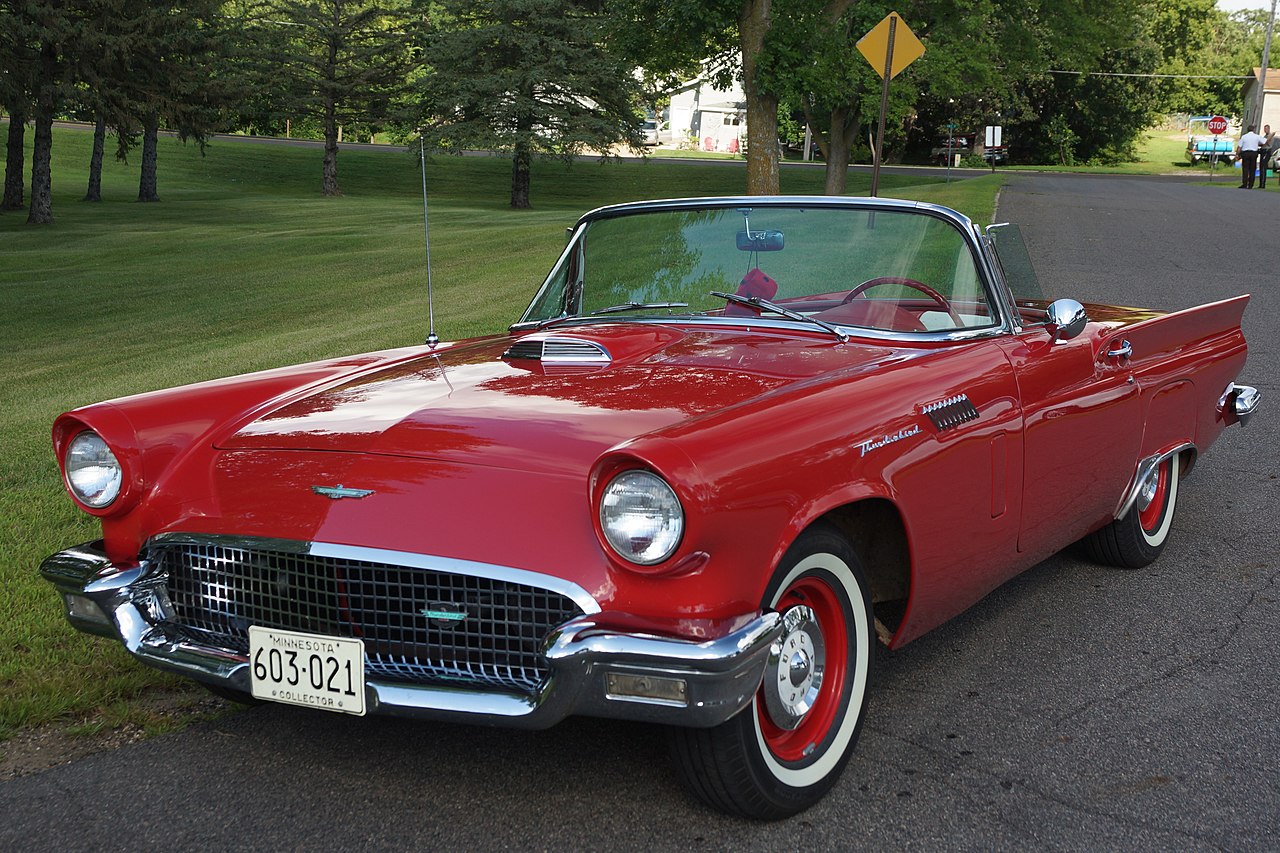 Greg Gjerdingen, CC BY 2.0, Wikimedia Commons
Greg Gjerdingen, CC BY 2.0, Wikimedia Commons
You Might Also Like:
Every Prediction From The Jetsons That Has Already Come True
A Peek Inside Million-Dollar Luxury Cars (Interior Photos)

